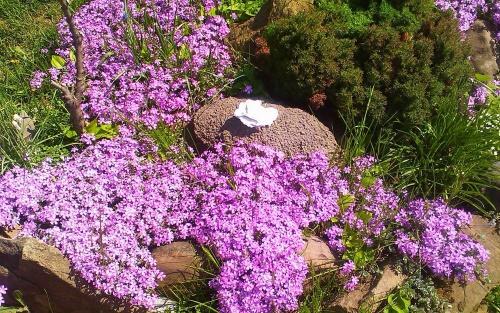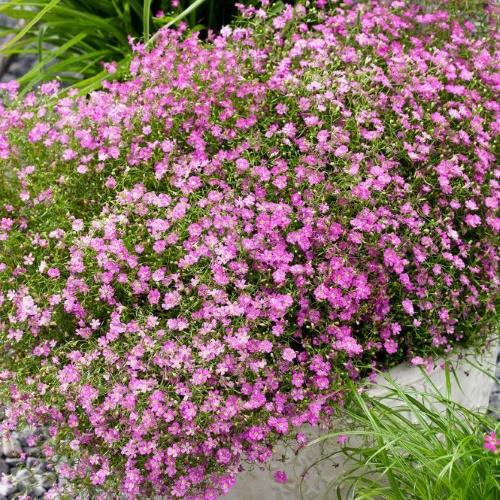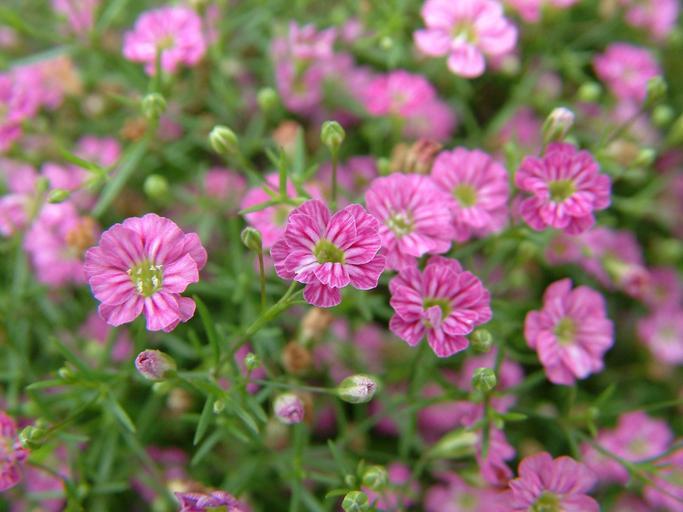Gypsophila creeping pink will delight for many years with graceful but abundant flowering
 Plants with small flowers have a special charm: despite their miniature size, most of them will delight with super-abundant flowering. It is to these that gypsophila creeping pink belongs. During the flowering period, compact bushes turn into real flower balls due to the large number of buds. Considering that this culture is characterized by an unpretentious and persistent character, it is not surprising why it is so popular.
Plants with small flowers have a special charm: despite their miniature size, most of them will delight with super-abundant flowering. It is to these that gypsophila creeping pink belongs. During the flowering period, compact bushes turn into real flower balls due to the large number of buds. Considering that this culture is characterized by an unpretentious and persistent character, it is not surprising why it is so popular.
Characteristic features of the plant

 In early summer, small pink flowers bloom, collected in loose inflorescences. There are so many of them that the bush looks like a pink cloud from afar. Flowering lasts 1.5-2 months. In the southern strip, the plant can sometimes bloom again in the fall, but not so abundantly.
In early summer, small pink flowers bloom, collected in loose inflorescences. There are so many of them that the bush looks like a pink cloud from afar. Flowering lasts 1.5-2 months. In the southern strip, the plant can sometimes bloom again in the fall, but not so abundantly.
Creeping gypsophila is a representative of perennial flower species, but there are also annual varieties.
Gypsophila creeping pink in the garden - simple planting and caring for a perennial
 The graceful beauty makes only one requirement - the site must be well lit. Otherwise, it is absolutely not capricious and can grow on any soil, but it is preferable - dry. The bushes tolerate drought well and winter well, living in one place for many years. There is no need to transplant them, moreover, the plants do not tolerate this procedure well.
The graceful beauty makes only one requirement - the site must be well lit. Otherwise, it is absolutely not capricious and can grow on any soil, but it is preferable - dry. The bushes tolerate drought well and winter well, living in one place for many years. There is no need to transplant them, moreover, the plants do not tolerate this procedure well.
Most often, gypsophila is propagated by the seed method by direct sowing into the ground (in spring or autumn). You can still try to cut it, but the cuttings often do not take root.
Blooming perennial care is minimal:
- Weed the weeds to prevent them from choking off the plants, especially the young ones.
- Water periodically in hot summer.
- Feed the gypsophila once a month, alternating organic matter (mullein infusion) and mineral complex.
- In the fall, cut off the shrunken aerial part. Young annuals aren't strong enough to winter well, so cover them with leaves.
Creeping gypsophila is an ideal plant for alpine slide... It can be planted next to plants that fade quickly. Also, openwork bushes will create a catchy, but not drowning out foreground for taller neighbors growing behind them, for example, for roses or phlox.